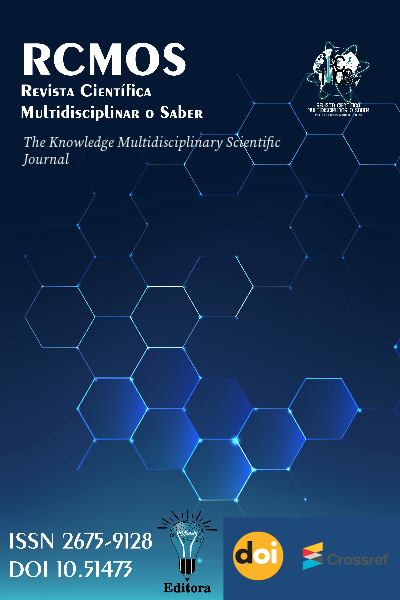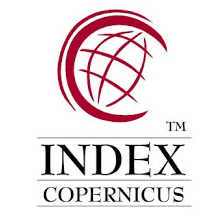UMA ABORDAGEM ACERCA DAS DOENÇAS CONGÊNITAS E SUAS DEVIDAS REPERCUSSÕES
DOI:
https://doi.org/10.51473/rcmos.v1i1.2024.530Palavras-chave:
Anomalia congênita, infecções congênitas perinatais, canal de parto infectado.Resumo
As infeções congênitas são os principais determinantes de incapacidade permanente em crianças e ocasionam grande impacto na morbimortalidade e custos dos tratamentos. Dentre as principais infecções que podem causar complicações na gravidez destacam-se: toxoplasmose, rubéola, citomegalovírus, sífilis, zika vírus, herpes, hepatite. Essas infecções podem provocar alterações morfológicas em tecidos ou órgãos fetais, dessa forma, a identificação e o tratamento precoce podem reduzir a transmissão materno-fetal e/ou diminuir o impacto no feto. Dessa forma, o objetivo desse estudo foi realizar uma revisão atualizada sobre infecções congênitas, destacando aspectos epidemiológicos, de diagnóstico e tratamento. Trata-se de uma revisão de literatura, sendo que, para a construção do texto utilizou-se das seguintes bases de dados: SciELO, PubMed, BVS e Google acadêmico. Portanto, a prevenção, o diagnóstico precoce das infecções congênitas e demais ações que visam o tratamento adequado da mulher e seu filho, com integração de programas de saúde e sistemas de vigilância locais, são de extrema importância para a saúde pública.
Downloads
Referências
Travassos AG, Brites C, Netto EM, Fernandes AS, Rutherford GW, Queiroz CM. Prevalence of sexually transmitted infections among HIV-infected women in Brazil. Braz J Infect Dis. 2012;16(6):581-5. DOI: https://doi.org/10.1016/j.bjid.2012.08.016
Figueiró-Filho EA, Senefonte FR, Lopes AH, Morais OO, Souza Júnior VG, Maia TL, et al. Frequência das infecções pelo HIV-1, rubéola, sífilis, toxoplasmose, citomegalovírus, herpes simples, hepatite B, hepatite C, doença de Chagas e HTLV I/II em gestantes, do Estado de Mato Grosso do Sul. Ver Soc Bras Med Trop. 2007;40(2):181-7. DOI: https://doi.org/10.1590/S0037-86822007000200007
Neu N, Duchon J, Zachariah P. TORCH infections. Clin Perinatol. 2015;42(1):77-103. DOI: https://doi.org/10.1016/j.clp.2014.11.001
Walle F, Kebede N, Tsegaye A, Kassa T. Seroprevalence and risk factors for toxoplasmosis in HIV infected and non-infected individuals in Bahir Dar, Northwest Ethiopia. Parasit Vectors. 2013;6(1):15. DOI: https://doi.org/10.1186/1756-3305-6-15
Reiche EM, Morimoto HK, Farias GN, Hisatsugu KR, Geller L, Gomes AC, et al. Prevalência de tripanossomíase americana, sífilis, toxoplasmose, rubéola, hepatite B, hepatite C e da infecção pelo vírus da imunodeficiência humana, avaliada por intermédio de testes sorológicos, em gestantes atendidas no período de 1996 a 1998 no Hospital Universitário Regional Norte do Paraná (Universidade Estadual de Londrina, Paraná, Brasil). Ver Soc Bras Med Trop. 2000;33(6):519-27. DOI: https://doi.org/10.1590/S0037-86822000000600002
Inagaki AD, Oliveira LA, Oliveira MF, Santos RC, Araújo RM, Alves JÁ, et al. Soroprevalência de anticorpos para toxoplasmose, rubéola, citomegalovírus, sífilis e HIV em gestantes sergipanas. Ver Soc Bras Med Trop. 2009;42(5):532-6. DOI: https://doi.org/10.1590/S0037-86822009000500010
Porto AM, Amorim MM, Coelho IC, Santos LC. Perfil Sorológico para toxoplasmose em gestantes. Ver Assoc Med Bras. 2008;54(3):242-8. DOI: https://doi.org/10.1590/S0104-42302008000300018
Gonçalves MA, Matos CC, Spegiorin LC, Oliani DC, Oliani AH, Mattos AH. Seropositivity rates for toxoplasmosis, rubella, syphilis, cytomegalovirus, hepatitis and HIV among pregnant women receiving care at a public health service, São Paulo state, Brazil. Braz J Infect Dis. 2010;14(6):601-5. DOI: https://doi.org/10.1590/S1413-86702010000600009
Spano LC, Gatti J, Nascimento JP, Leite JP. Prevalence of human cytomegalovirus infection in pregnant and non-pregnant women. J Infect. 2004;48(3):213-20. DOI: https://doi.org/10.1016/S0163-4453(03)00128-2
Malla N, Sengupta C, Dubey ML, Sud A, Dutta U. Antigenaemia and antibody response to Toxoplasma gondii in human immunodeficiency virus-infected patients. Br J Biomed Sci. 2005;62(1):19-23. DOI: https://doi.org/10.1080/09674845.2005.11732682
Araújo MA, Freitas SC, Moura HJ, Gondim AP, Silva RM. Prevalence and factors associated with syphilis in parturient women in Northeast, Brazil. BMC Public Health. 2013;13:206. DOI: https://doi.org/10.1186/1471-2458-13-206
Boletim Epidemiológico – Sífilis [Internet]. Brasília (DF): Ministério da Saúde/ Secretaria de Vigilância em Saúde/Departamento de DST, Aids e Hepatites Virais; 2012 [cited 2015 March 3];1(1). Available from: http://bvsms.saude.gov.br/bvs/periodicos/boletim_epidem_sifilis_2012.pdf
Melku M, Kebede A, Addis Z. Magnitude of HIV and syphilis seroprevalence among pregnant women in Gondar, Northwest Ethiopia: a cross-sectional study . HIV AIDS (Auckl). 2015;7:175-82. DOI: https://doi.org/10.2147/HIV.S81481
Miranda MM, Souza LM, Aguiar RA, Corrêa Júnior MD, Maia MM, Borges RS, et al. Rastreamento das infecções perinatais na gravidez: realizar ou não? . Femina. 2012;40(1):13-22.
Fernandes MA, Batista GI, Carlos JC, Gomes IM, Azevedo KM, Setúbal S, et al. Toxoplasma gondii antibody profile in HIV-1-infected and uninfected pregnant women and the impact on congenital toxoplasmosis diagnosis in Rio de Janeiro, Brazil. Braz J Infect Dis. 2012;16(2):170-4. DOI: https://doi.org/10.1016/S1413-8670(12)70300-8
Yeganeh N, Watts HD, Camarca M, Soares G, Joao E, Pilotto JH, et al. Syphilis in HIV-infected mothers and infants results from the NICHD/HPTN 040 study. Pediatr Infect Dis J. 2015;34(3):e52-7. DOI: https://doi.org/10.1097/INF.0000000000000578
Boletim Epidemiológico – HIV-AIDS. Brasília (DF): Ministério da Saúde/Secretaria de Vigilância em Saúde/Programa Nacional de DST e Aids. 2014;3(1).
Silveira MF, Santos IS, Matijasevich A, Malta DC, Duarte EC. [Preterm births in Brazil from 1994 to 2005 according to the Information System on Live Births (SINASC)]. Cad Saúde Pública. 2009;25(6):1267-75 Portuguese. . DOI: https://doi.org/10.1590/S0102-311X2009000600009
Silveira MF, Santos IS, Barros AJD, Matijasevich A, Barros FC, Victora CG. Increase in preterm births in Brazil: review of population-based studies. Ver Saúde Pública. 2008;42(5):957-64. DOI: https://doi.org/10.1590/S0034-89102008000500023
United States Agency for International Development (USAID). World Health Organization (WHO) [Internet]. Newborn health and survival: a call to action. Geneva: USAID/WHO [cited 2014 May 2]. Available
Fundo das Nações Unidas para a Infância (UNICEF). Situação mundial da infância 2008: sobrevivência infantil. Brasília (DF): UNICEF; 2007.
Buitendijk S, Zeitlin J, Cuttini M, Langhoff-Roos J, Bottu J. Indicators of fetal and infant health outcomes. Eur J Obstet Gynecol Reprod Biol. 2003;111(Suppl 1):S66-S77. DOI: https://doi.org/10.1016/j.ejogrb.2003.09.007
Brasil. Ministério da Saúde. Informações de Saúde. Departamento de Informação e informática do SUS. DATASUS [Internet]. Indicadores e Dados Básicos – Brasil – 2010. Brasília (DF): Ministério da Saúde; 2010 [citado 2015 Mar 3]. Disponível em: http://tabnet.datasus.gov.br/cgi/idb2010/matriz.htm
» http://tabnet.datasus.gov.br/cgi/idb2010/matriz.htm
Giglio MR, Lamounier JÁ, Morais Neto OL, César CC. [Low birth weight in a cohort of newborns in Goiânia-Brazil in 2000]. Ver Bras Ginecol Obstet. 2005;27(3):130-6. DOI: https://doi.org/10.1590/S0100-72032005000300006
Maia RR, Souza JM. Fatores associados ao baixo peso ao nascer em município do norte do Brasil. Ver Bras Crescimento Desenvolv Hum. 2010;20(3):735-44. DOI: https://doi.org/10.7322/jhgd.19981
Kamath BD, MacGuire ER, McClure EM, Goldenberg RL, Jobe AH. Neonatal mortality from respiratory distress syndrome: lessons for low-resource countries . Pediatrics. 2011;127(6):1139-46. DOI: https://doi.org/10.1542/peds.2010-3212
Andres RL, Day MC. Perinatal complications associated with maternal tobacco use. Semin Neonatol. 2000;5(3):231-41. DOI: https://doi.org/10.1053/siny.2000.0025
Bhutani VK, Johnson LH, Keren R. Diagnosis and management of hyperbilirubinemia in the term neonate for a safer first week. Pediatr Clin North Am. 2004;51(4):843-61. DOI: https://doi.org/10.1016/j.pcl.2004.03.011
Wróblewska-Seniuk K, Wender-Ozegowska E, Szczapa J, Chojnacka K, Bieganska E, Pietryga M, et al. [Perinatal complications in newborns of mothers with gestacional diabetes]. Med Wieku Rozwoj. 2004;8(3 Pt 2):719-32 Polish. .
Downloads
Arquivos adicionais
Publicado
Edição
Seção
Licença
Copyright (c) 2024 Gustavo de Godoi Teixeira, Vitor Ferreira Duarte, Ana Paula Ferreira Duarte, Thomás Cézar Araújo Campos, Leila Cláudia Alves Armond (Autor/in)

Este trabalho está licenciado sob uma licença Creative Commons Attribution 4.0 International License.
Este trabalho está licenciado sob a Licença Creative Commons Atribuição 4.0 Internacional (CC BY 4.0). Isso significa que você tem a liberdade de:
- Compartilhar — copiar e redistribuir o material em qualquer meio ou formato.
- Adaptar — remixar, transformar e construir sobre o material para qualquer propósito, inclusive comercial.
O uso deste material está condicionado à atribuição apropriada ao(s) autor(es) original(is), fornecendo um link para a licença, e indicando se foram feitas alterações. A licença não exige permissão do autor ou da editora, desde que seguidas estas condições.
A logomarca da licença Creative Commons é exibida de maneira permanente no rodapé da revista.
Os direitos autorais do manuscrito podem ser retidos pelos autores sem restrições e solicitados a qualquer momento, mesmo após a publicação na revista.













